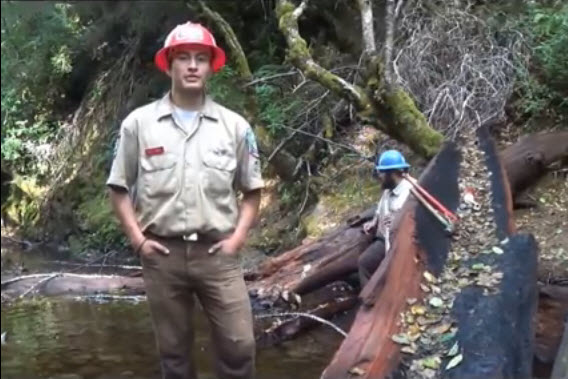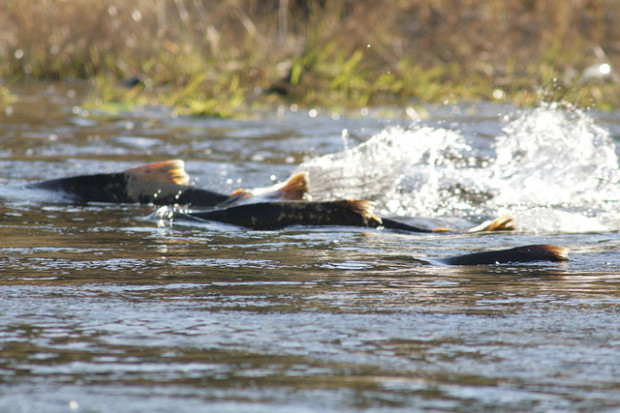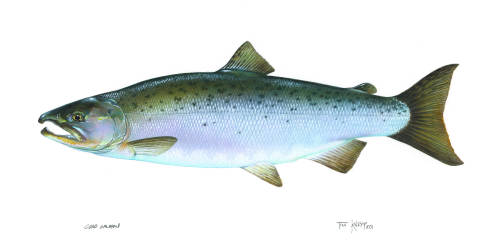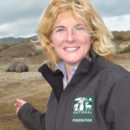We have much more to do and your continued support is needed now more than ever.
Saving Salmon in California: A Native Perspective
A note from NWF’s California Director Beth Pratt: California Conservation Corp crew members and their leader John Griffith have embraced NWF’s Certified Wildlife Habitat program and certified their Ukiah campus, with plans of doing more sites across California. I recently visited with the crew and became so impressed with their dedication to helping wildlife that I offered a guest spot on the Wildlife Promise blog if they would write about their experiences. The first story, about the quest for the Pacific giant salamander, will have you wanting to encounter one of these slimy but cool creatures. The second story in the series, written by Nick Aquirre, tells the fascinating story of a continuing battle between predator and prey. In the third story in the series, Melina Di Stefano introduces you, with a great video, to the red-legged frog and how she works to save them. In this new blog, Kody Kibby talks about his lifelong relationship with salmon–and how he works to restore their habitat.

I am doing my part for salmon in the California Conservation Corps (CCC)—a state youth workforce development program. I joined the CCC after I graduated from high school. I wasn’t sure what I wanted to pursue in life, but I knew that I loved the outdoors and my culture. The CCC has helped me combine the two. Being a corps member has been difficult at times. The CCC’s motto is: Hard Work, Low Pay, and Miserable Conditions. I learned that they weren’t kidding about that. In spite of the challenges, I worked hard every day. I grew. Eventually, I was promoted to crew leader and selected for the fire crew. Joining the program was a good decision.
I’ve participated in many types of ecological restoration projects during my time in the CCC, but this summer (my last summer in the program) I fought fires and worked on salmon habitat restoration projects.
Watch a video of Kody talking about his restoration work:
[youtube]https://www.youtube.com/watch?v=LuiOuWYD8u8&index=17&list=UUZAwVEpsoMhkQqoAnsLQkZA[/youtube]
When the CCC does salmon habitat restoration projects, we try to make the results of our efforts mimic natural processes. According to scientists, salmon evolved with a lot of wood in the streams. This wood came from the old growth forests that once lined the streams and rivers of California. Whether it was the huge branches of giant redwoods that dropped after a major storm, or fallen doug fir trees, the wood would cause the water of winter high flows to scour pools, sort gravel ideal for spawning, and provide much needed cover for salmon from predators. Salmon evolved with the effects of wood in their freshwater habitat. After a century of bad logging practices, which regularly involved clear cutting all the way to the water’s edge, wood was no longer a consistent source to aid the salmon in completing their lifecycle.
The CCC partners with non-profits like the Eel River Watershed Improvement group (ERWIG), private companies like Mendocino Redwood Company, and other state agencies like the California Department of Fish and Wildlife to bring wood back into streams of the Eel River Watershed. Our logs are much smaller, so they have to be secured to bankside trees and bedrock to prevent them from being swept away during winter storms. Still, the smaller logs have a big impact in favor of fish. They provide some of the habitat requirements that salmon will need to help them during the part of their life spent in freshwater.

We can prevent the loss of more salmon from happening with continuing restoration efforts, open dialogue and inclusiveness among all stake holders, active cooperation by more community members and organizations, and more understanding of what salmon need. The Western World way of thinking has created obstacles for how we should see nature and each other. Not all people think of salmon as just a commodity. Overcoming these obstacles of conflicting worldviews and understanding each other’s differences are the key to success for salmon restoration, and achieving balance between two cultures that have been clashing since the beginning of America. We must all come together and work with each other (native and non-native people) to save ne-puey/salmon.

For more California wildlife photos and stories, follow NWF California on Facebook.





















